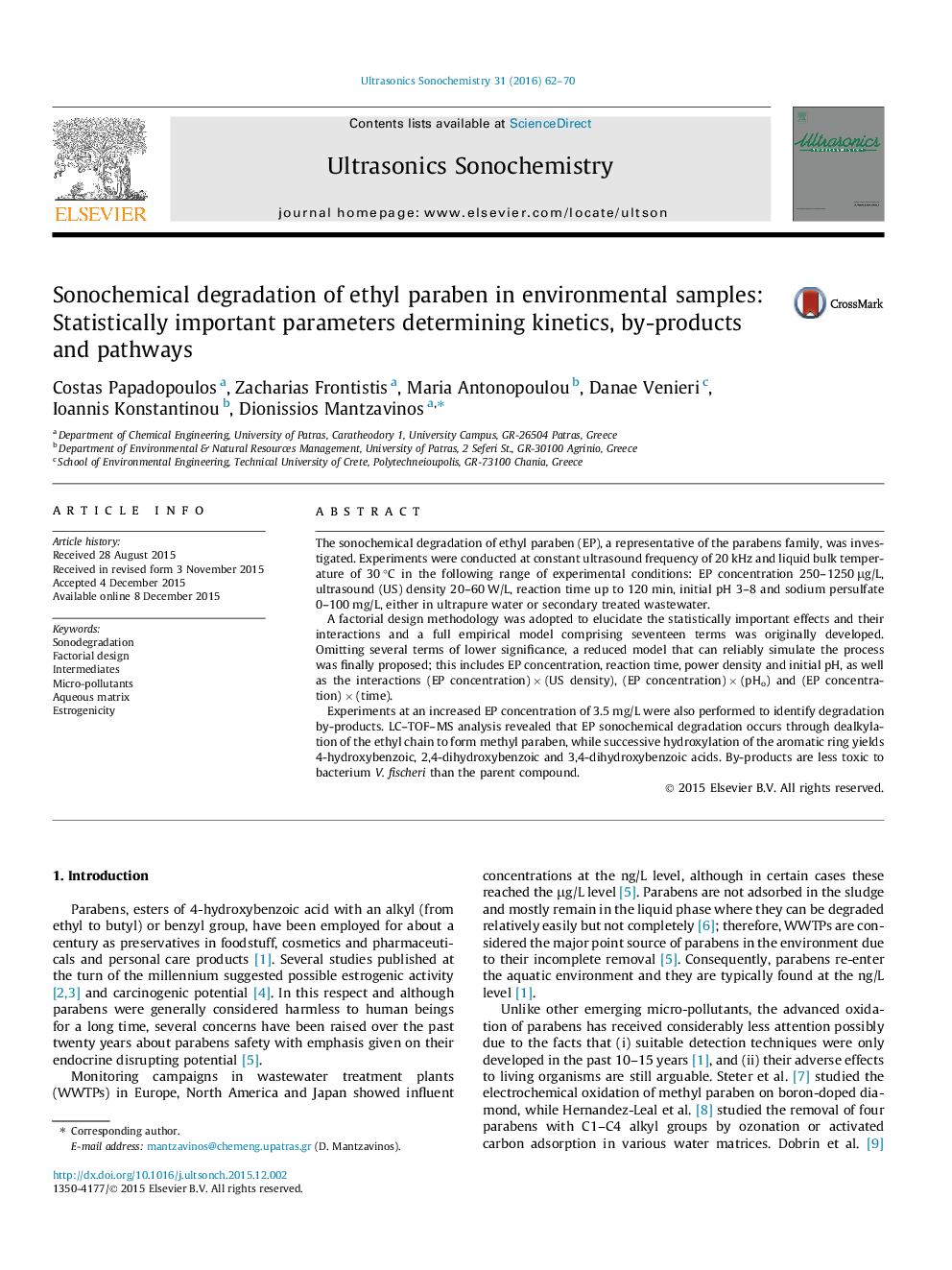| کد مقاله | کد نشریه | سال انتشار | مقاله انگلیسی | نسخه تمام متن |
|---|---|---|---|---|
| 1265646 | 1496873 | 2016 | 9 صفحه PDF | دانلود رایگان |
• Low frequency ultrasound degrades ethyl paraben (EP) at the μg/L to low mg/L level.
• Factorial experimental design was employed to assess important operating parameters.
• EP concentration, time, power, pH and 2nd order interactions of EP are significant.
• Kinetics are between 0th and 1st order concerning EP concentration.
• Dealkylated and hydroxylated transformation by-products have been identified.
The sonochemical degradation of ethyl paraben (EP), a representative of the parabens family, was investigated. Experiments were conducted at constant ultrasound frequency of 20 kHz and liquid bulk temperature of 30 °C in the following range of experimental conditions: EP concentration 250–1250 μg/L, ultrasound (US) density 20–60 W/L, reaction time up to 120 min, initial pH 3–8 and sodium persulfate 0–100 mg/L, either in ultrapure water or secondary treated wastewater.A factorial design methodology was adopted to elucidate the statistically important effects and their interactions and a full empirical model comprising seventeen terms was originally developed. Omitting several terms of lower significance, a reduced model that can reliably simulate the process was finally proposed; this includes EP concentration, reaction time, power density and initial pH, as well as the interactions (EP concentration) × (US density), (EP concentration) × (pHo) and (EP concentration) × (time).Experiments at an increased EP concentration of 3.5 mg/L were also performed to identify degradation by-products. LC–TOF–MS analysis revealed that EP sonochemical degradation occurs through dealkylation of the ethyl chain to form methyl paraben, while successive hydroxylation of the aromatic ring yields 4-hydroxybenzoic, 2,4-dihydroxybenzoic and 3,4-dihydroxybenzoic acids. By-products are less toxic to bacterium V. fischeri than the parent compound.
Journal: Ultrasonics Sonochemistry - Volume 31, July 2016, Pages 62–70
